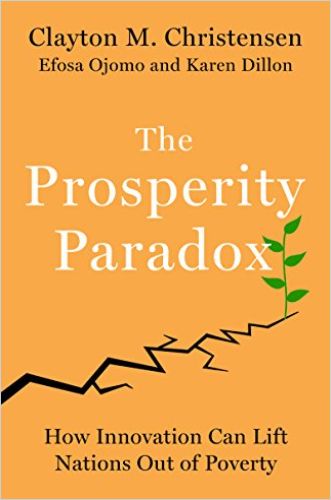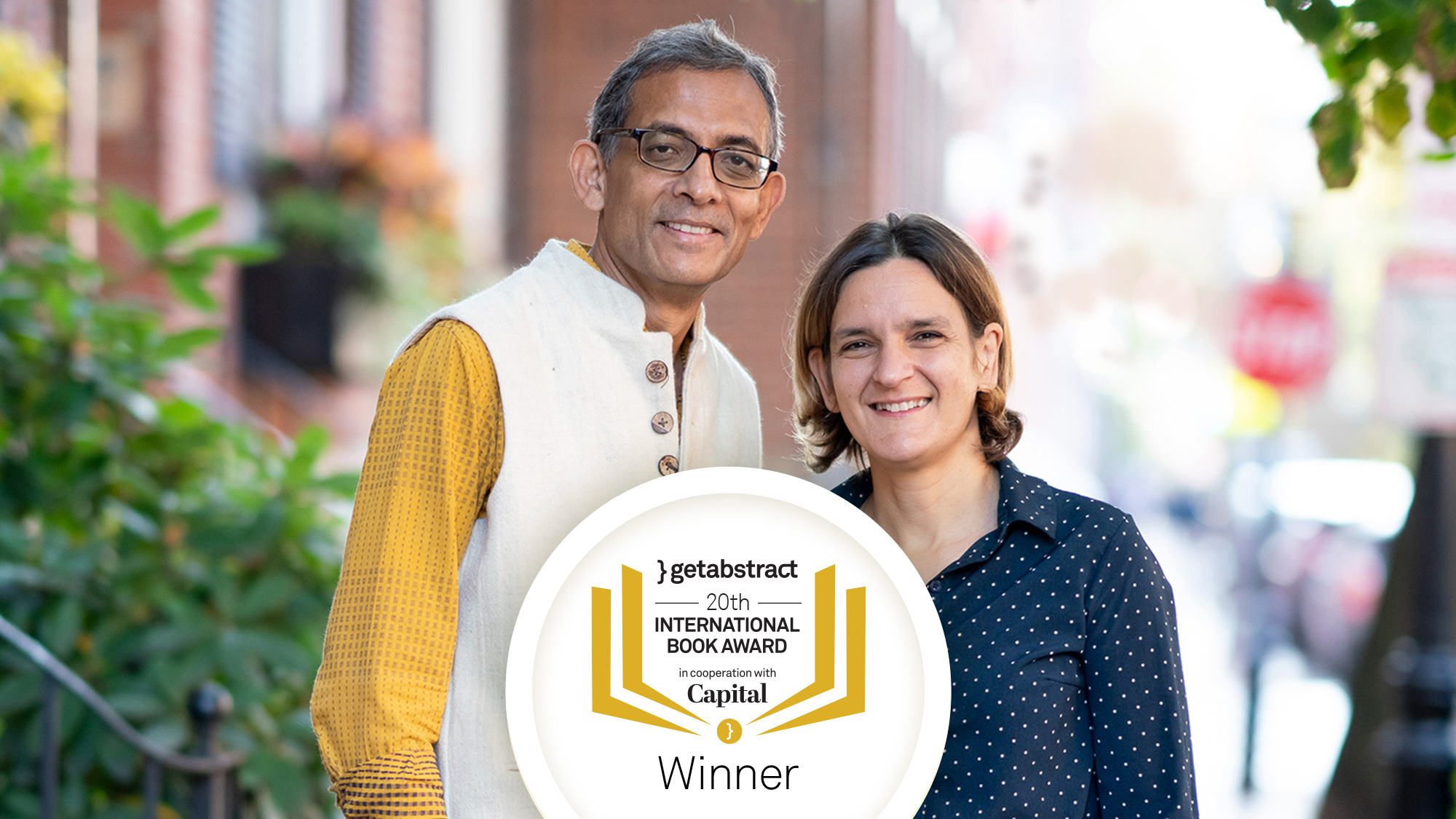“When the Foreign Aid Industry Primarily Focuses on Empowering Entrepreneurs, It Will Win the Fight Against Poverty.”

getAbstract: Let’s start with a simple yet big question. What is poverty, in economic terms?
Karen Dillon: Poverty almost always shows itself as a lack of resources, such as food, sanitation, safe water, education, health care, and the lack of public services in poor communities. As such, it is reasonable to assume that poverty is primarily a resource problem. Based on that assumption, over the past several decades, many in the international development community have been executing an expensive push strategy of development that is almost exclusively resource-based. With the best of intentions, wealthy countries push resources to poor communities in order to solve a problem. At their best, these solutions are temporarily successful. At their worst, they leave communities worse off than before the projects were implemented because there is no mechanism to sustain them.
That is why the fight against poverty sometimes seems hopeless. But some win it nevertheless. How?
Clayton M. Christensen: Over the past 40 years, more than one billion people have lifted themselves out of poverty. On the surface, that seems like wild global success in the fight against poverty. Upon closer observation, you find that the vast majority of those who have escaped poverty are from China and, to a lesser extent, India. The reason these two countries have done exceptionally well in their fight against poverty is because they have focused on market-based reforms which have unleashed the entrepreneurial spirit of their people. When the foreign aid industry primarily focuses on empowering entrepreneurs in a country, it will win the fight against poverty.
It used to be said that, if a country wanted to escape poverty, it needed to invest heavily in infrastructure – economic and political – and often rely on foreign aid. Is that still true? Was it ever true?
Efosa Ojomo: Interestingly, the notion that infrastructure must be pushed onto societies by governments or foreign aid before any meaningful development can happen has not been a time-honored path to prosperity. In fact, the idea that large-scale infrastructure investments are a precondition for economic development is a relatively new theory which began to take root in the 1950s. And even the word “infrastructure” was not commonly used until several influential papers were written to promote it as a precursor to economic development. After that, however, it became synonymous with the promise of economic progress and social advancement. But one need not look far to see the many failed infrastructure projects in low- and middle-income countries. From the many hospitals that provide lackluster health care and the countless schools providing subpar education, to the defunct roads, bridges, and electricity installations, too few infrastructure projects work.
Karen Dillon: That’s because infrastructure has been delinked from its real purpose. Infrastructure is simply the most efficient mechanism through which a society stores or distributes value. This value is often created by investments in innovation. And so, infrastructure projects will only help economies grow insofar as they help societies productively store or distribute innovations.
For example?
Clayton M. Christensen: Consider the following example in education. Over the past three decades, there has been a big push to improve primary school education in poor countries. Enrollment in many low-income countries is now almost at the level of that in high-income countries, however, the quality is vastly different. International assessments of literacy and numeracy show that the average student in a low-income country performs worse than 95% of the students in high-income countries. In addition, students who are at the top quarter of their classes in low-income countries would end up at the bottom quarter in high-income countries. A similar phenomenon is seen in health care, major infrastructure projects, and in institutional development programs. Well-intended projects get pushed into communities that cannot sustain them.
You suggest implementing more pull strategies to overcome poverty, instead. Why?
Karen Dillon: Pull strategies are different from push in almost every way and are far more effective at triggering sustained prosperity: First, pull strategies are often originated by innovators on the ground who are responding to the struggles of everyday people or specific market demands. Second, they have more of an investigative or inquisitorial approach to problem solving as opposed to a more advocacy approach. Third, pull strategies focus on creating, or responding to the needs of, a market first. It is the creation of this new market that pulls in sustainable solutions to health, education, infrastructure, and other major resources in societies.
You argue that it will not be development aid or state infrastructure development that will put an end to poverty, but innovation. But there are many types of innovation: In your book, you distinguish between sustaining innovations, efficiency innovations, and market-creating innovations. Why is that important?
Efosa Ojomo: Because the different types of innovation are differently well qualified to help the poor. Let’s start with sustaining innovations. They target demanding, high-end customers with better performance than what was previously available. These innovations are designed for existing consumers and typically do not expand the market for a particular product. They are a very critical component in the economic engine and are necessary for companies and countries to remain competitive. But because they target existing consumption, their impact on job growth tends to be marginal. These innovations have a substitutive effect on production and consumption. In other words: When companies produce newer and better products, they stop producing and selling older versions. As such, they can repurpose the capital and labor used to produce previous versions to produce the new versions. For example, when a car company decides to add new features such as heated seats or adaptive cruise control, those are examples of sustaining innovations. Obviously, that won’t help the poorest.
Clayton M. Christensen: Efficiency innovations, as the name implies, enable companies to do more with less resources. These innovations allow companies to squeeze as much as possible from existing or newly acquired company resources. Efficiency innovations free up capital but are notorious for eliminating jobs when they are not targeted at nonconsumers. Efficiency innovations come in all shapes and sizes, from outsourcing company operations to lower-cost regions and eliminating jobs to leveraging technology that improves efficiency. But at the core of efficiency innovation is a company’s focus on freeing up capital and doing more with less. This is different from market-creating innovation because the focus on market-creating innovation is making products and services more affordable for nonconsumers.
Karen Dillon: And that is the point: market-creating innovations target nonconsumers – the segment of the population who would benefit by owning or using a product but cannot due to the product’s cost, time or the expertise needed to use it. These innovations transform complex and expensive products into simple and more affordable products, making them accessible to a wider segment of the population.
What products come to mind as good examples?
Karen Dillon: A perfect example of a market-creating innovation is Henry Ford’s Model T car. Ford was able to manufacture a car that was inexpensive enough for an American with a modest income to purchase. He also made the car easier to drive so that owners would not have to hire a driver or need special expertise. Some of Ford’s innovations were the assembly line which reduced the Model T chassis assembly from 12.5 hours to 1.5 hours. Ford passed on the cost savings to the new class of consumers of automobiles, such that by 1925 the price of his car had plummeted from $825 – that’s $21,000 in 2015 dollars – to $260 – $3,500 in 2015 dollars.
What does an entrepreneur need to be able to “pull” market-creating innovations in poor areas?
Clayton M. Christensen: There are five attributes that entrepreneurs and managers should look for as they consider investing in market-creating innovations. First: Business models that target nonconsumption. Most innovations and business models that exist today are targeted at existing consumers – those who can already afford products on the market. Nonconsumption is different. It’s the inability of a would-be consumer to purchase and use a product or service. When business models target nonconsumption, they create new markets for a whole new population of people. Second: An enabling technology. An enabling technology is one that provides improving levels of performance at progressively lower cost. A technology is any process within an organization that converts inputs of lower value into outputs of greater value. Enabling technologies, such as the internet, smartphones or the Toyota Production System, can provide a competitive edge to companies as they create new markets.
Efosa Ojomo: Third is a new value network. A value network is what defines a company’s cost structure. For example, before a product goes from farm to grocery store, it must first be harvested, processed, stored, transported, packaged, marketed, and so on. This network of activities constitutes what’s called the product’s value network, with each adding a little bit of cost to the price of the final product. Because most businesses are targeted at existing customers, their cost structure prevents them from targeting nonconsumers. Creating a new value network enables companies to redefine their cost structure so their solutions can be afforded by nonconsumers and profitable at the same time.
Karen Dillon: When creating a new market, and that’s number four on our watchlist, innovators typically use an emergent – or flexible – strategy because they are going after markets that are not yet defined, and so must learn from their soon-to-be-customers. Deliberate – or fixed – strategies are typically used when companies know the needs of the market. Managers and entrepreneurs must be willing to modify their intended strategies based on the feedback they get from the new customers they’re trying to serve. And fifth but not least: Executive support! Businesses that attempt to create a new market are often unpopular because not only do they target a market that technically does not yet exist, but they also often require more resources than businesses that serve existing customers. Hence, executive support is paramount in order to ensure the market-creating business doesn’t suffocate from lack of resources.
This now sounds as if not only the economic future of the still-poor regions of the world depends on market-creating innovations, but they would benefit the most from them. Right?
Karen Dillon: Absolutely. Low- and middle-income regions of the world stand to benefit the most from market-creating innovations because these are the regions with the most amount of nonconsumers. Consider the impact of Mo Ibrahim’s Celtel in Africa. In the late 1990s, when this Sudanese entrepreneur first conceived of setting up a mobile phone company in Africa, his colleagues said he had lost his mind, since many of his potential customers were not only living in poverty, but also living in countries with undeveloped infrastructure and institutions. But Mo Ibrahim saw something different. Without access to mobile phones and easy communication, people had to trek miles to visit family members or relay an urgent message. It was in this struggle that the entrepreneur saw an opportunity to make telephony accessible and affordable, so in 1998 he founded Celtel.
What happened next?
Karen Dillon: In just seven years, Celtel was providing a cell phone service to millions of Africans who couldn’t afford phones years earlier, ultimately generating immense prosperity not only for Mo Ibrahim himself, but eventually for hundreds of thousands of people!
Efosa Ojomo: Mr. Ibrahim’s success inspired other investors to invest billions of dollars in the region. The resulting telecommunications industry has not only democratized communication, but has also created close to four million jobs while generating more than $15 billion in annual taxes. These are taxes that governments can now use to build new infrastructure and improve institutions. By 2020, the industry is estimated to be worth more than $210 billion. Now, imagine if other entrepreneurs created similar markets for health care, education, housing, and other services.
When it comes to the institutions, markets also need rules so that they are followed in a binding manner. Otherwise, no one invests – or corruption flourishes. So, isn’t a basic legal infrastructure more important than the innovation that builds on it?
Clayton M. Christensen: Both a legal infrastructure and innovation are important. But which comes first? How do societies truly evolve to build sustainable institutions? Consider this. Most countries in Africa are severely debt-burdened, with limited funds to spend on their citizens; the average expenditure of African national governments in 2017 was around $740 per citizen. In the Democratic Republic of Congo, Central African Republic, and Burundi, governments spent $39, $57 and $65 respectively. Contrast that with the expenditures of Norway, Denmark and Sweden at $36,871, $30,415 and $27,000 respectively. There’s ample research that suggests most institutional reform projects fail to actually improve institutions. In fact, when new institutions are created in poor countries, most of which don’t have a means to keep the institutions sustainable, many of these institutions fail. Our research suggests that market-creating innovations provide a strong foundation by generating tax revenues that can support the sustenance of new institutions.
What role do state bureaucracies play in this? On the one hand, they determine the rules; on the other, they tend to hinder innovation and often support corruption instead.
Efosa Ojomo: It’s the same here. Government does have an important role to play, but the question is sequencing. Our point is that innovation precedes institutions.
It’s an uncomfortable thought that the institutions that are necessary for good governance and for a thriving economy are not all in place before major development begins to take root. But our research tells us that that’s not the way it happens. Innovation is the seed. Yes, government can nurture and water that seed, but the seed comes from that innovation.
If today you had to rely on an existing, potentially disruptive innovation in an emerging or developing country to solve as many problems of the world’s poorhouses as possible – what would come to your mind?
Efosa Ojomo: When asked questions like these, the answer given is almost always some breakthrough technology – smartphones, internet, Blockchain or drones. But those answers all miss the mark. The most important innovation that can solve as many problems of the world’s poor as possible is good management: The ability to successfully lead people toward a common goal. There are millions of people all over the world who are, right now, coming up with terrific solutions to their problems.
Clayton M. Christensen: We truly believe in the power and potential of innovation and hope that our theories will guide them as they do. We are cheering them on from the sidelines knowing they will see nonconsumption and opportunities to solve problems that we can’t even begin to imagine.
Karen Dillon: Their innovations, coupled with good management, can answer that question better than we can. Their innovations will speak for themselves.
Clayton M. Christensen is Kim B. Clark Professor of Business Administration at the Harvard Business School of Harvard University.
Karen Dillon was Editor of Harvard Business Review. She now works as an author.
Efosa Ojomo is a senior research fellow at the Clayton Christensen Institute for Disruptive Innovation – here is a summary of his TED talk above.
Next steps
Read more on the topic in getAbstract’s channels Innovation, Innovation Management, Corruption, Disruptive Technologies, Doing Business in Africa, Economics, Financial Markets, Behavioral Finance or The Role of Government in Economics.












